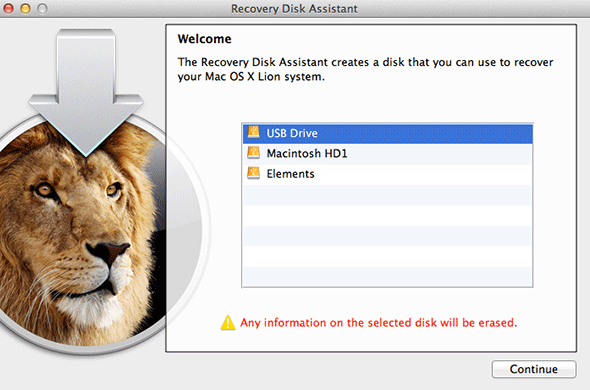- Dec 16, 2019 Use the 'createinstallmedia' command in Terminal. Connect the USB flash drive or other volume that you're using for the bootable installer. Make sure that it has at least 12GB of available storage. Open Terminal, which is in the Utilities folder of your Applications folder. Type or paste one of.
- Jun 12, 2013 How to Make a Bootable OS X Mavericks USB Install Drive. Double-click to mount “InstallESD.dmg” Open the mounted ‘OS X Install ESD’ image, and right-click “Base System.dmg” choosing “Open” to mount the image (BaseSystem.dmg may be named as “Base System.dmg.
These advanced steps are primarily for system administrators and others who are familiar with the command line. You don't need a bootable installer to upgrade macOS or reinstall macOS, but it can be useful when you want to install on multiple computers without downloading the installer each time.
Oct 24, 2011 Convert OS X Lion DMG Installer to a Bootable USB Thumb Drive. On your Mac, open up Disk Utility. Click on the USB Drive on the left. On the right pane, go to the Restore tab. Click on the Browse button and locate the.dmg installer for OS X Lion. (ie macosx10711a390.dmg) 4. Sep 22, 2016 Home » MacOS, Operating System » macOS Sierra 10.12 (16A323) bootable USB (DMG File) macOS Sierra 10.12 (16A323) bootable USB (DMG File) By. 4:11 PM No comments: macOS Sierra 10.12 4.51 GB. Siri makes its debut on Mac, with new features designed just for the desktop. Your Mac works with iCloud and your Apple devices in smart. Because of this, I recommend creating your own bootable El Capitan (OS X 10.11) installer drive on an external hard drive or USB thumb drive. If you need to install El Capitan on multiple Macs. Mar 24, 2018 In this easy tutorial you will learn how to create a bootable dvd or usb pendrive from a DMG file under Windows 7 to 10. Skip navigation. How to Create a Mac OS X. Sep 13, 2018 Drive Partition and Format. Open Disk Utility in the Utilities' folder. After Disk Utility loads select the drive (out-dented entry with the mfg.' S ID and size) from the side list. Click on the Erase tab in the Disk Utility toolbar. Name the drive, 'MyVolume'.
Download macOS

Find the appropriate download link in the upgrade instructions for each macOS version:
- macOS Catalina, macOS Mojave, and macOS High Sierra download directly to your Applications folder as an app named Install macOS Catalina, Install macOS Mojave, or Install macOS High Sierra. If the installer opens after downloading, quit it without continuing installation.
To get the required installer, download from a Mac that is using macOS Sierra 10.12.5 or later, or El Capitan 10.11.6. Enterprise administrators, please download from Apple, not a locally hosted software-update server. - macOS Sierra downloads as a disk image that contains a file named InstallOS.pkg. Open this file and follow the onscreen instructions. It installs an app named Install macOS Sierra into your Applications folder.
- OS X El Capitan downloads as a disk image that contains a file named InstallMacOSX.pkg. Open this file and follow the onscreen instructions. It installs an app named Install OS X El Capitan into your Applications folder.
Use the 'createinstallmedia' command in Terminal
- Connect the USB flash drive or other volume that you're using for the bootable installer. Make sure that it has at least 12GB of available storage and is formatted as Mac OS Extended.
- Open Terminal, which is in the Utilities folder of your Applications folder.
- Type or paste one of the following commands in Terminal. These assume that the installer is still in your Applications folder, and MyVolume is the name of the USB flash drive or other volume you're using. If it has a different name, replace
MyVolumein these commands with the name of your volume.
Catalina:*
Mojave:*
High Sierra:*
Sierra:
El Capitan: - Press Return after typing the command.
- When prompted, type your administrator password and press Return again. Terminal doesn't show any characters as you type your password.
- When prompted, type
Yto confirm that you want to erase the volume, then press Return. Terminal shows the progress as the bootable installer is created. - When Terminal says that it's done, the volume will have the same name as the installer you downloaded, such as Install macOS Catalina. You can now quit Terminal and eject the volume.
Os X Mavericks 10.9 Bootable Usb Dmg File
* If your Mac is using macOS Sierra or earlier, include the --applicationpath argument, similar to the way this argument is used in the commands for Sierra and El Capitan.

Use the bootable installer
After creating the bootable installer, follow these steps to use it:
- Plug the bootable installer into a compatible Mac.
- Use Startup Manager or Startup Disk preferences to select the bootable installer as the startup disk, then start up from it. Your Mac will start up to macOS Recovery.
Learn about selecting a startup disk, including what to do if your Mac doesn't start up from it. - Choose your language, if prompted.
- A bootable installer doesn't download macOS from the Internet, but it does require the Internet to get information specific to your Mac model, such as firmware updates. If you need to connect to a Wi-Fi network, use the Wi-Fi menu in the menu bar.
- Select Install macOS (or Install OS X) from the Utilities window, then click Continue and follow the onscreen instructions.
Learn more

For more information about the createinstallmedia command and the arguments that you can use with it, make sure that the macOS installer is in your Applications folder, then enter this path in Terminal:
Create Bootable Dmg In Windows
Catalina:
Mojave:
High Sierra:
Sierra:
Make Bootable Usb Os X
El Capitan: